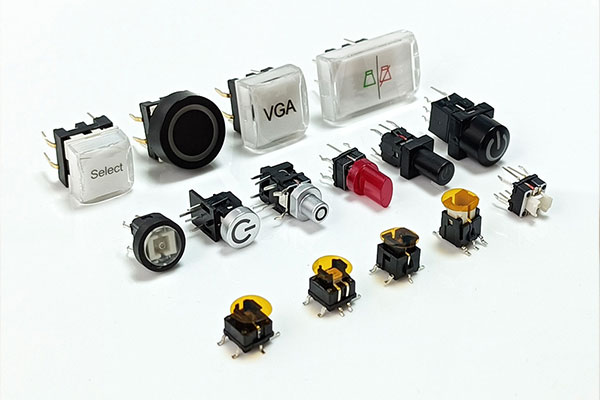Knowledge
How Does the LED tactile switch work?
The operation of a tactile switch with a green LED involves both the tactile switch function and the illumination provided by the LED. Here's a step-by-step explanation of how a tactile switch with a green LED typically works:

Tactile Switch Function:The tactile switch is a momentary push-button switch, meaning it is designed to make or break electrical connections only while the button is being pressed. It has a spring mechanism inside that gives it a tactile feel or feedback when pressed.
Internal Configuration:Inside the tactile switch with an integrated LED, there are two main components: the switch contacts and the LED. The switch contacts determine the switching action (normally open or normally closed) and are activated by the physical press of the button.
LED Component:The LED (Light Emitting Diode) is embedded within the switch and is typically connected to the same circuit. The LED has two leads - anode (+) and cathode (-). The anode is usually the longer lead, and the cathode is the shorter one.
Circuit Configuration:The tactile switch and the LED are part of an electrical circuit. The circuit is incomplete (open) when the button is not pressed. When the button is pressed, the switch contacts close, completing the circuit.
LED Illumination:When the circuit is closed, current flows through the LED. As a result, the LED emits green light. The illumination provides a visual indication that the switch is in the pressed state.
Momentary Operation:The tactile switch is designed for momentary operation. This means that when you release the button, the spring mechanism returns the switch to its original state, opening the circuit and turning off the LED.
Applications:Tactile switches with integrated LEDs are commonly used in applications where the user needs both a tactile feel and visual feedback. The green LED, in this case, offers a clear visual indication of the switch's status.
Voltage and Current Requirements: It's crucial to operate the tactile switch and LED within their specified voltage and current ratings. Check the datasheet provided by the manufacturer for this information.
In summary, a tactile switch with a green LED combines the tactile functionality of a momentary switch with the visual feedback provided by the illuminated LED. When the button is pressed, the switch closes, completing the circuit and allowing current to flow through the LED, resulting in the green light emission. When the button is released, the circuit opens, turning off the LED.
RELATED NEWS
- Can a metal button switch be integrated with indicator lights 2025-12-08
- The difference between a momentary and a latching metal button switch 2025-12-08
- What size is the broadcasting illuminated push button 2025-12-03
- Video illuminated push button 2025-12-03
- Are DIP switches still widely used nowadays 2025-11-03
CATEGORIES
LATEST NEWS
CONTACT US
Contact: Bella
Phone: 15999819066
E-mail: rucoe@rucoe.com
Whatsapp:+86-15999819066
Add: Taoyuan Street, Nanshan, Shenzhen
